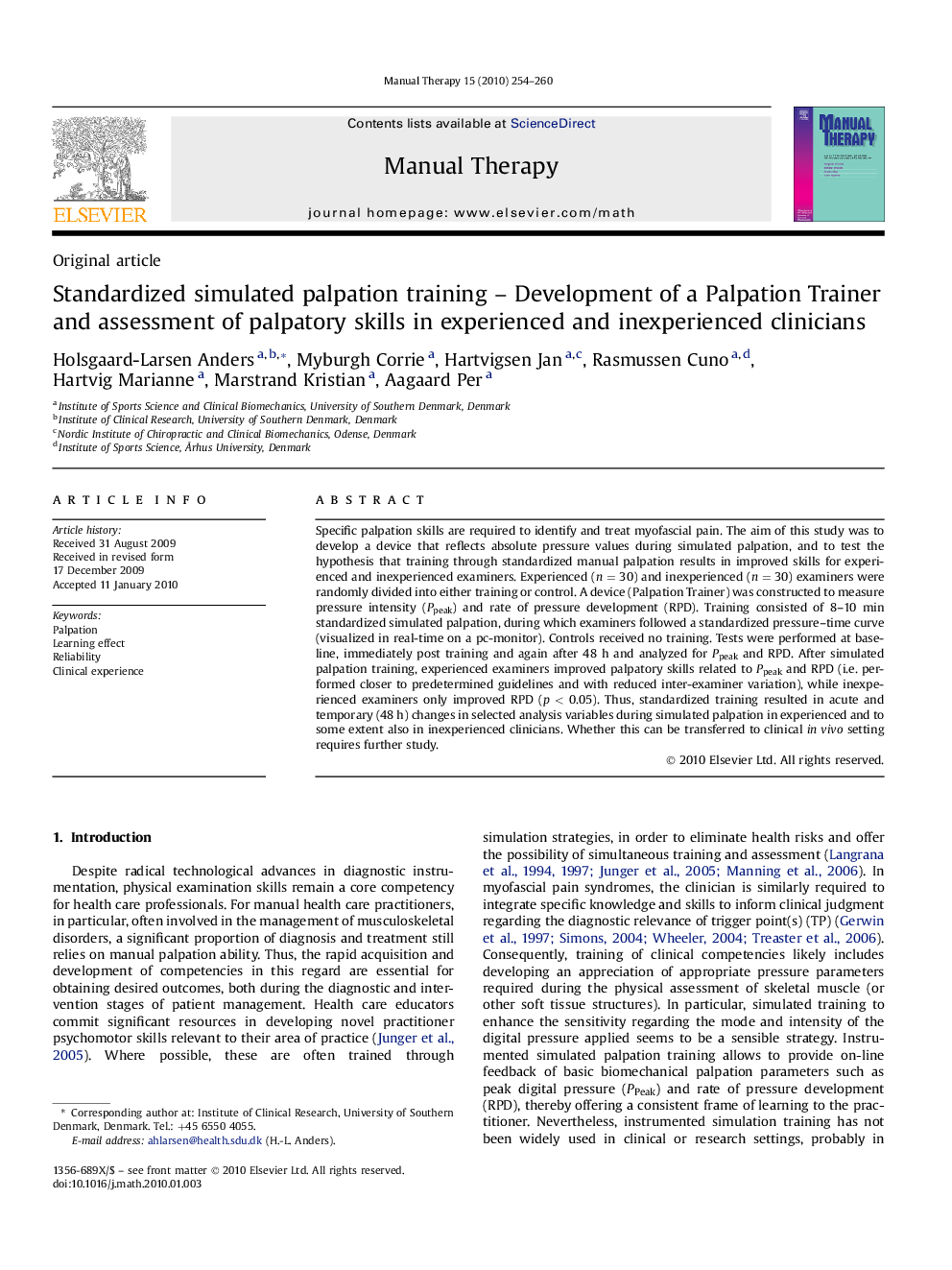| Article ID | Journal | Published Year | Pages | File Type |
|---|---|---|---|---|
| 5864983 | Manual Therapy | 2010 | 7 Pages |
Abstract
Specific palpation skills are required to identify and treat myofascial pain. The aim of this study was to develop a device that reflects absolute pressure values during simulated palpation, and to test the hypothesis that training through standardized manual palpation results in improved skills for experienced and inexperienced examiners. Experienced (n = 30) and inexperienced (n = 30) examiners were randomly divided into either training or control. A device (Palpation Trainer) was constructed to measure pressure intensity (Ppeak) and rate of pressure development (RPD). Training consisted of 8-10 min standardized simulated palpation, during which examiners followed a standardized pressure-time curve (visualized in real-time on a pc-monitor). Controls received no training. Tests were performed at baseline, immediately post training and again after 48 h and analyzed for Ppeak and RPD. After simulated palpation training, experienced examiners improved palpatory skills related to Ppeak and RPD (i.e. performed closer to predetermined guidelines and with reduced inter-examiner variation), while inexperienced examiners only improved RPD (p < 0.05). Thus, standardized training resulted in acute and temporary (48 h) changes in selected analysis variables during simulated palpation in experienced and to some extent also in inexperienced clinicians. Whether this can be transferred to clinical in vivo setting requires further study.
Related Topics
Health Sciences
Medicine and Dentistry
Complementary and Alternative Medicine
Authors
Holsgaard-Larsen Anders, Myburgh Corrie, Hartvigsen Jan, Rasmussen Cuno, Hartvig Marianne, Marstrand Kristian, Aagaard Per,
